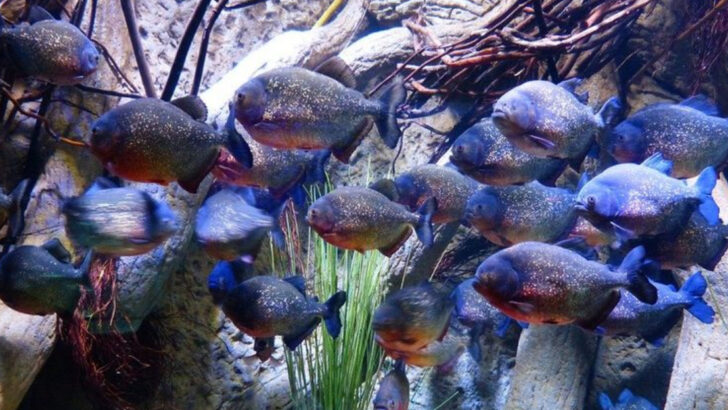Fish aren’t always peaceful little bubbles of zen gliding through coral reefs.
Some of them are cold-blooded killers—with backup.
Yes, you read that right.
There are fish that hunt in packs, like wolves of the deep.
They coordinate.
They corner.
They ambush.
And when they strike, it’s swift, silent, and shockingly smart.
These aren’t your average solo predators.
They move as a unit—fins slicing through water with one shared goal: trap the prey and leave nothing behind.
So next time you’re snorkeling and think that school of fish looks “friendly,”
just remember: some of them are working together… and you might be in their path.
Ready to meet the ocean’s most organized assassins?
Let’s dive in.
Bluefish
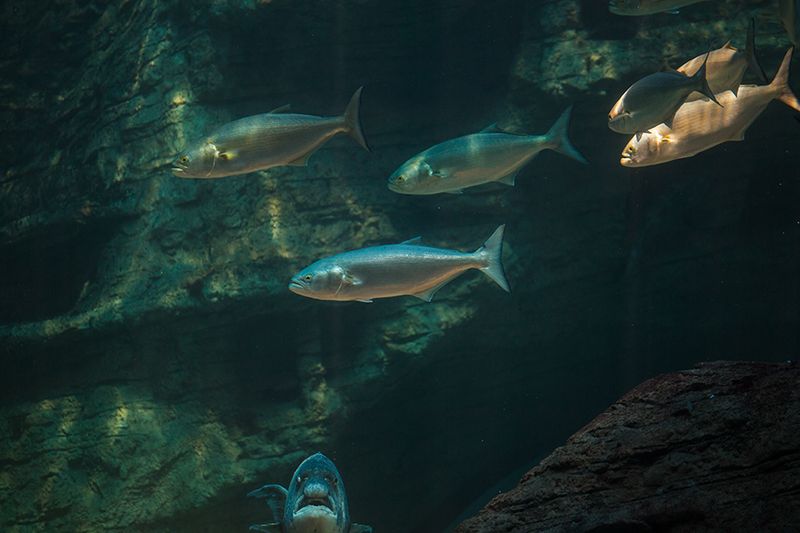
Known for their aggressive nature, bluefish hunt in packs to encircle and corral their prey. With razor-sharp teeth, these predators strike swiftly, often leaving a path of destruction in their wake. Their teamwork ensures a successful catch, as they alternate roles in the hunt.
Bluefish are found in temperate and tropical waters worldwide, especially along the Atlantic coast. Their synchronized movements are a spectacle, reflecting their evolutionary success in group hunting.
Each bluefish plays a pivotal role in overwhelming and capturing prey, making them formidable hunters of the sea.
Piranha
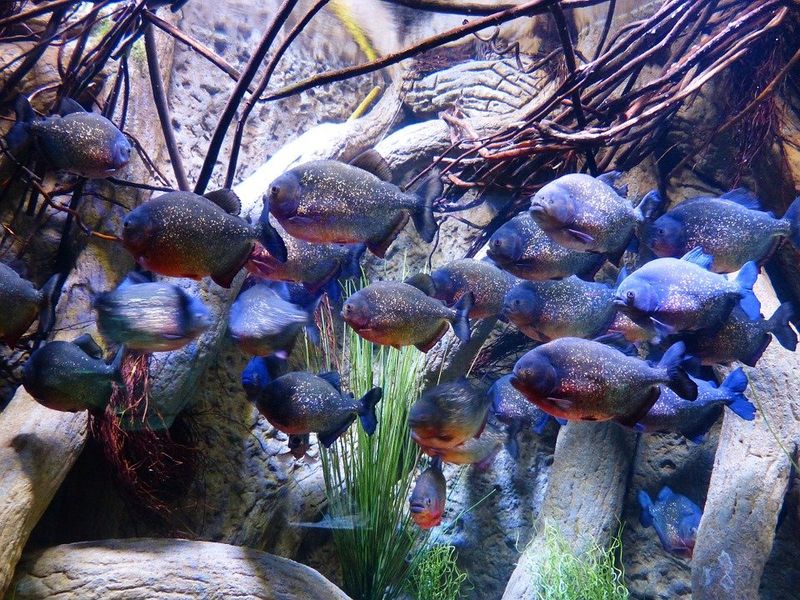
Piranhas, often dramatized in popular media, hunt in packs within the rivers of South America. Their infamous sharp teeth and powerful jaws make them efficient predators. Working together, they can strip prey rapidly, a behavior that has fascinated and frightened observers alike.
In their natural habitat, piranhas use the element of surprise and numbers to overwhelm their prey. The infamous feeding frenzy is a testament to their collaborative hunting style.
Despite their fearsome reputation, piranhas are an integral part of their ecosystem, maintaining balance through their predatory habits.
Humboldt Squid
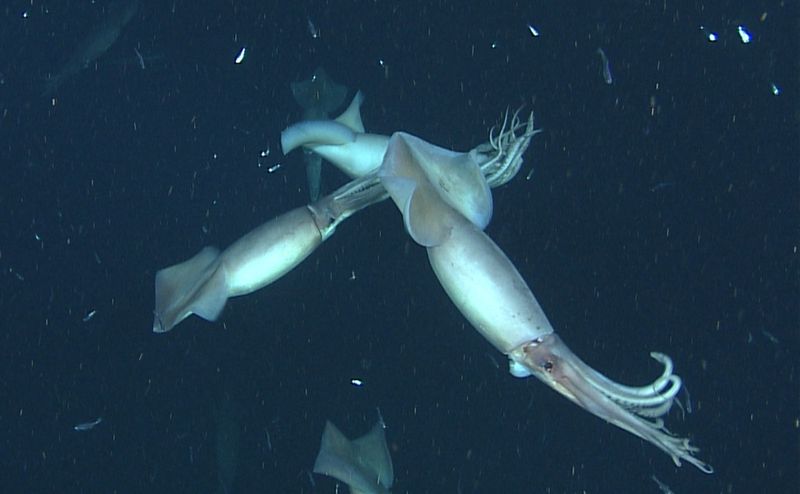
Dubbed the ‘red devils’ of the sea, Humboldt squid are notorious for their aggressive pack hunting. Found in the Pacific Ocean, these squid communicate using color changes to coordinate attacks. Their large size and speed make them formidable predators.
Humboldt squids are known to hunt cooperatively, often taking on prey much larger than themselves. Their ability to change color rapidly aids in both communication and camouflage.
These cephalopods are a prime example of sophisticated pack hunting in the ocean, showcasing intelligence and adaptability.
Yellowtail Amberjack
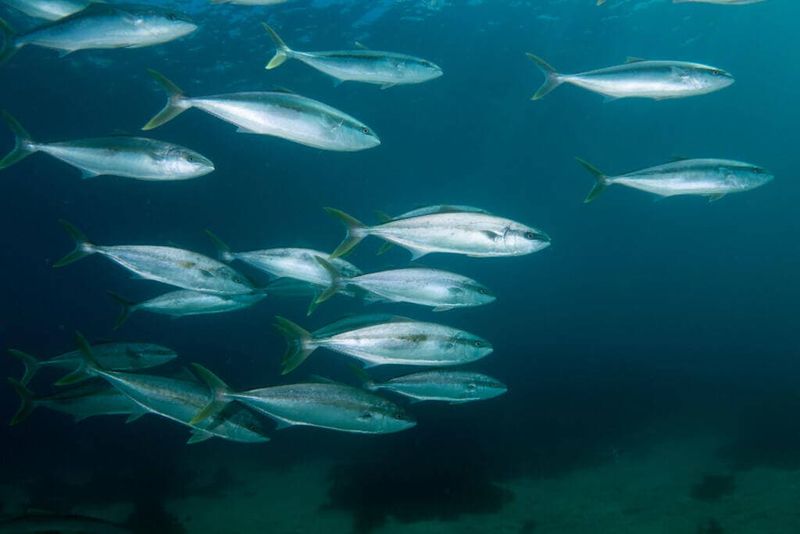
The yellowtail amberjack is a sleek predator that often hunts in schools, targeting small fish and squid. This species relies on speed and agility, using coordinated efforts to drive prey into tight groups.
Amberjacks are prevalent in subtropical waters, where their hunting prowess is a key to survival. Their pack hunting strategy allows them to tackle larger prey, maximizing their success rates.
With their striking yellow tail and streamlined bodies, these fish are adept hunters, exemplifying teamwork in the marine environment.
Yellowfin Tuna
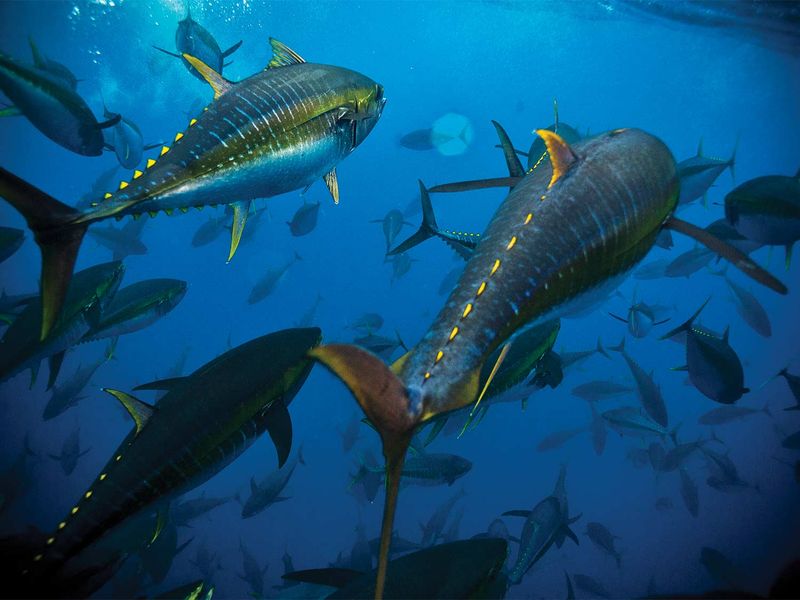
Yellowfin tuna are known for their incredible speed and endurance. These fish hunt in packs to outmaneuver and capture prey, often coordinating with dolphins to enhance their efficiency.
Found in tropical and subtropical oceans, yellowfin tuna utilize their streamlined bodies and powerful tails in pursuit of prey. Their cooperative hunting tactics are a testament to their adaptability and intelligence.
As apex predators, yellowfin tuna play a vital role in their ecosystems, showcasing the power of collective hunting in the marine world.
Great Barracuda
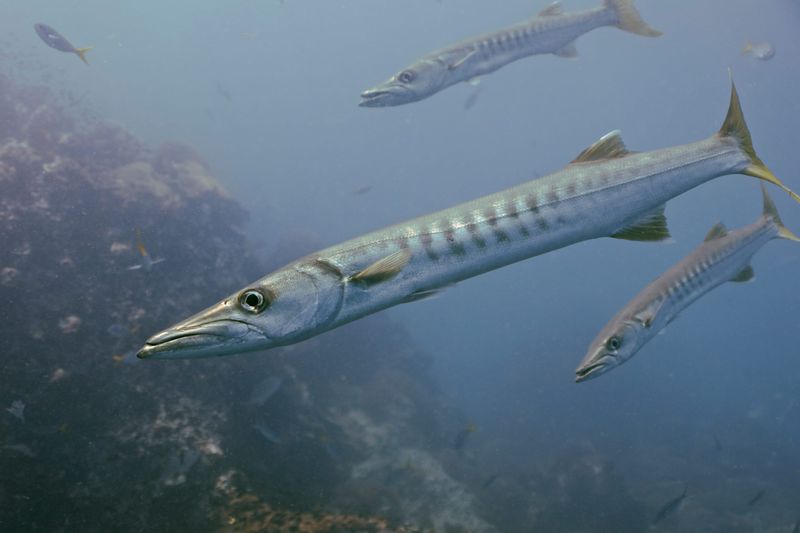
The great barracuda is a formidable predator that occasionally hunts in groups to herd and capture prey. Known for their speed and sharp teeth, these fish are efficient killers of the sea.
Barracudas often use surprise and swift strikes to capture their targets, showcasing their adaptability in various hunting scenarios. Found in tropical and subtropical waters, they are a common sight in coral reefs.
Their pack hunting behavior is not as frequent as others, but when they do, it’s a display of power and precision.
Striped Bass
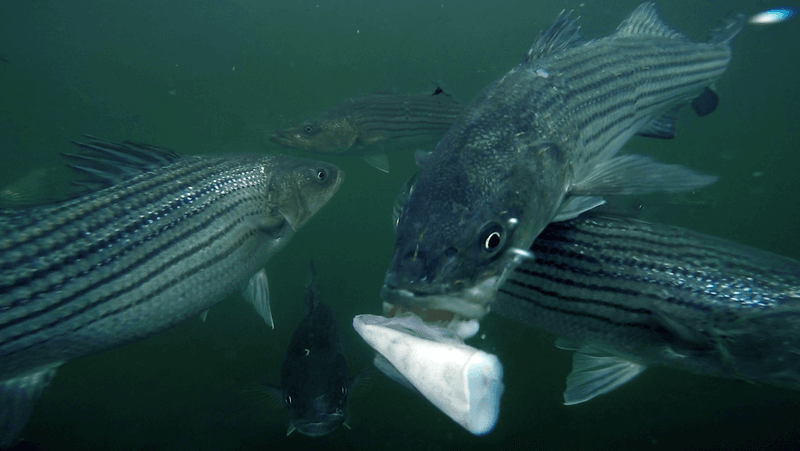
Striped bass are known for their migratory behavior and hunting in packs within coastal waters and estuaries. These fish use teamwork to corral baitfish, increasing their hunting efficiency.
Their striking body patterns make them easily recognizable, and their pack mentality aids in overcoming larger prey. Striped bass are a favorite among anglers for their fighting spirit and size.
This species exemplifies the success of group hunting, adapting to different environments and available prey.
Walleye
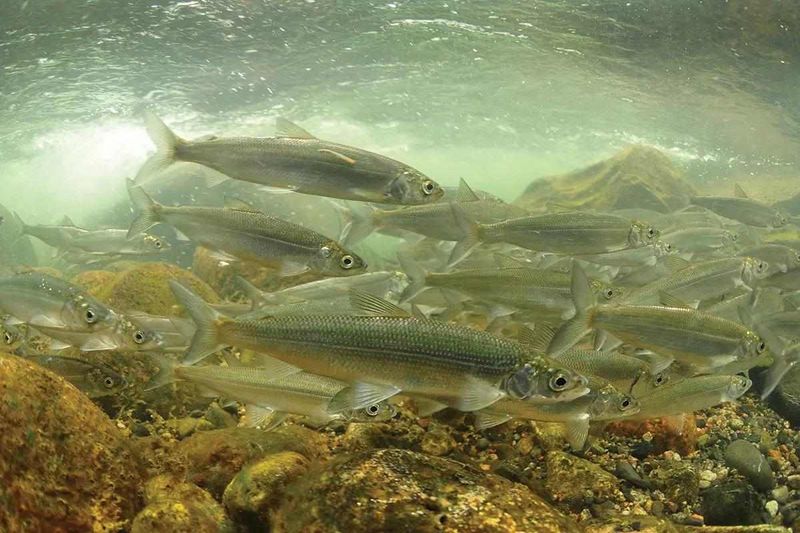
The walleye is a well-known freshwater predator that often hunts in groups to increase its success rate. Found in North American lakes and rivers, these fish use their excellent night vision to their advantage.
Walleyes are adept at coordinating attacks on schools of smaller fish, using stealth and precision. Their cooperative behavior ensures that they remain top predators in their habitat.
Famous for their taste, walleyes are also a popular target for fishermen, showcasing their importance beyond just hunting prowess.
Blacktip Reef Shark
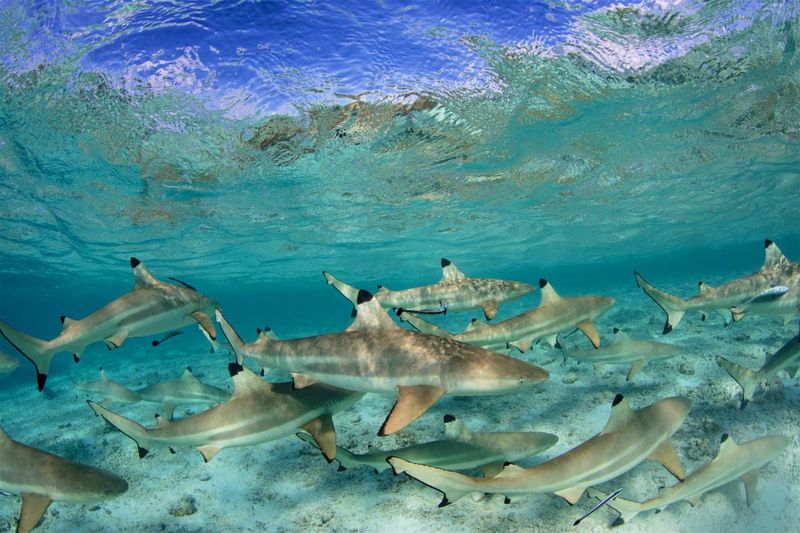
Blacktip reef sharks are social creatures often seen hunting in packs around coral reefs. These agile predators use their numbers to corral fish into tight balls, making feeding more efficient.
Their distinctive black-tipped fins make them easily identifiable, and their cooperative hunting strategy showcases their intelligence. Found in tropical and subtropical waters, they are a vital part of the reef ecosystem.
Their pack behavior not only aids in hunting but also provides safety in numbers, crucial for their survival.
Sardines
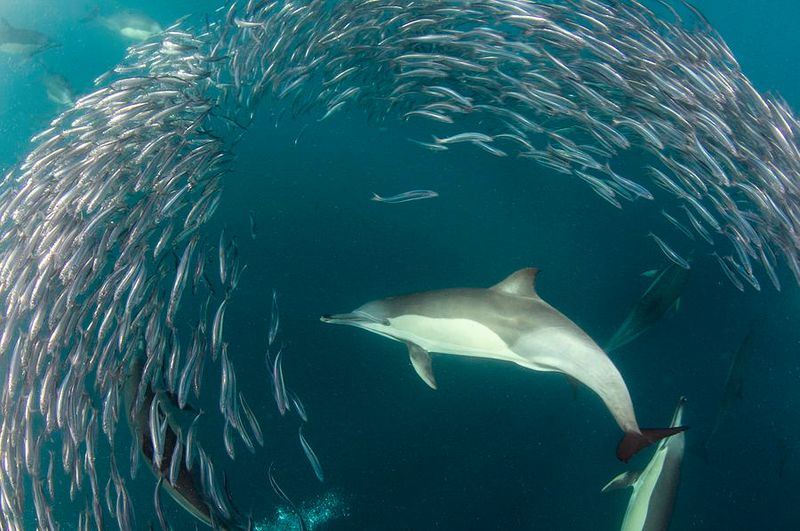
Sardines, though small, rely on massive schools for survival, and this pack behavior aids them in hunting plankton. Their synchronized swimming confuses predators and allows efficient feeding.
Found in oceans worldwide, sardines are a key food source for many larger marine animals. Their pack strategy not only helps them in feeding but also in avoiding predators.
These tiny fish are a testament to the power of numbers, using collective movement as both offense and defense.
Spotted Eagle Ray
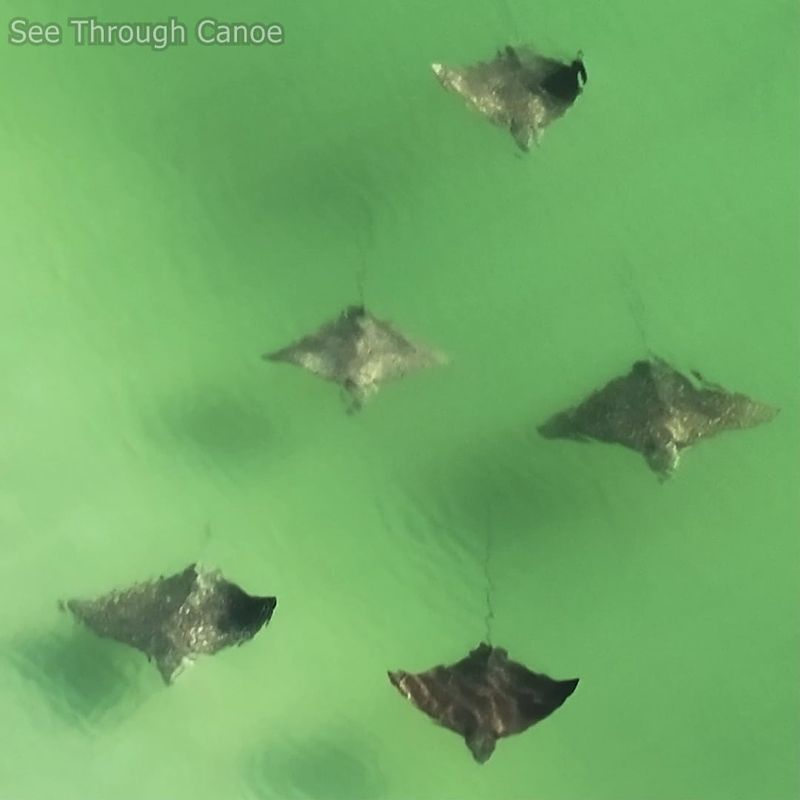
Spotted eagle rays are known for their graceful movements and pack hunting behavior. Often seen gliding over sandy bottoms, they use their snouts to uncover hidden prey.
These rays are found in tropical and subtropical seas, where their group tactics aid in disturbing the sediment and flushing out food. Their spotted patterns make them a visually stunning sight underwater.
The pack hunting strategy of these rays is a remarkable adaptation, highlighting their intelligence and cooperation.
Common Dolphin
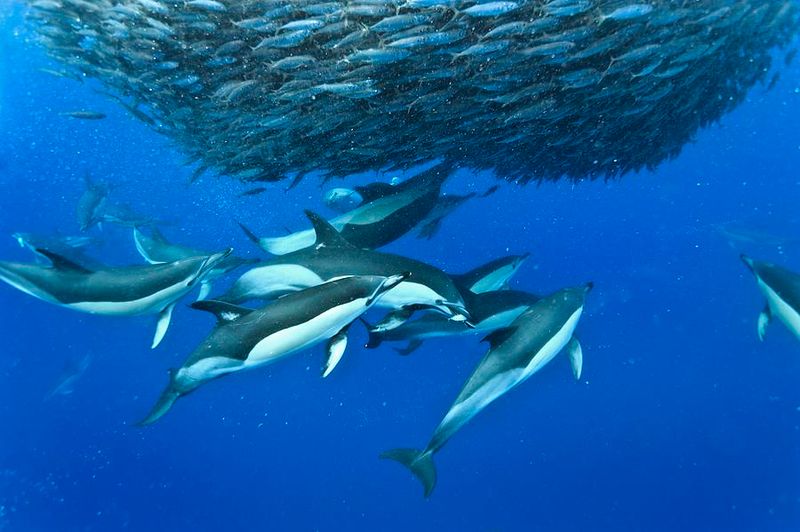
Common dolphins are renowned for their intelligence and playful nature, often seen hunting in pods. Their cooperative hunting techniques involve herding fish into tight balls, making capture easier.
Found in oceans around the world, these dolphins communicate using clicks and whistles to coordinate their movements. Their social structure and teamwork are key to their hunting success.
Beyond hunting, dolphins’ playful interactions strengthen bonds, showcasing the complexity of their social lives.
Skipjack Tuna
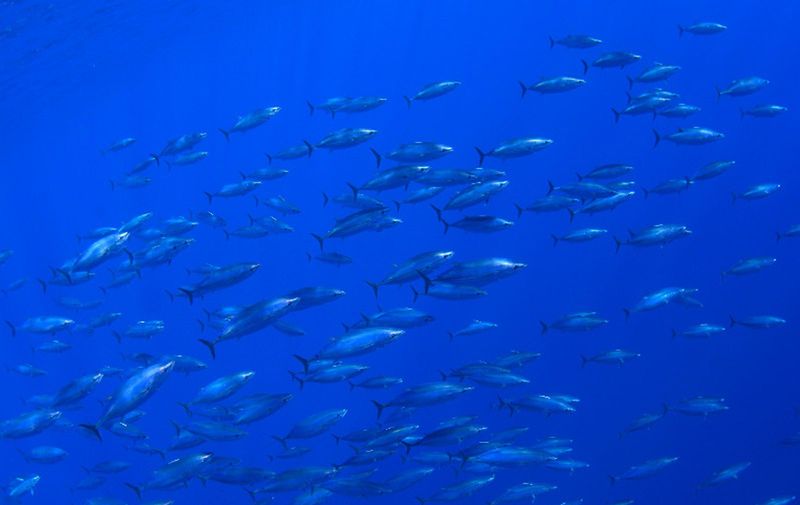
Skipjack tuna are smaller relatives of the yellowfin, but they are no less impressive in their hunting abilities. These fish hunt in large schools, often with other marine species, to trap prey.
Their speed and agility allow them to outpace many oceanic predators, making them efficient hunters. Skipjacks are commonly found in tropical and subtropical waters, where their cooperative behavior is a survival strategy.
Their striped bodies reflect their dynamic nature, a symbol of life in the fast lane.
Cobia
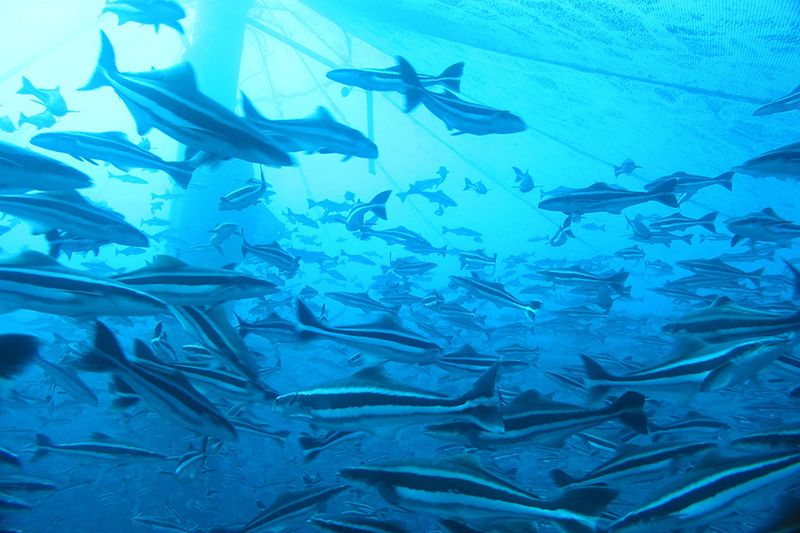
Cobia are known for their opportunistic hunting methods, often seen trailing larger predators to scavenge leftovers. However, they also form groups to hunt smaller prey, showcasing flexibility.
These fish are found in warm waters worldwide, where their cooperative hunting boosts their efficiency. Their elongated bodies and lateral lines are distinctive features.
Cobia are valued both for their taste and their role in the ocean’s food web, demonstrating the importance of teamwork underwater.
Atlantic Herring
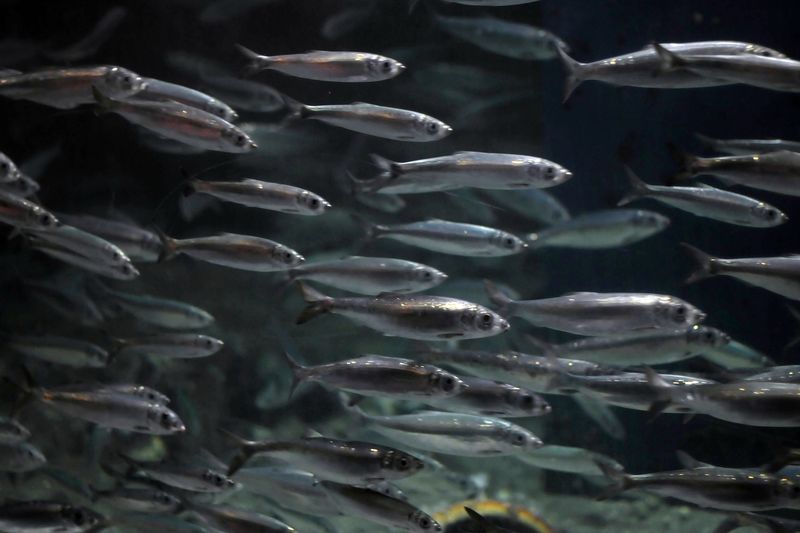
Atlantic herring are famous for their vast schools, which serve both defensive and offensive purposes. These fish feed on plankton by filtering the water as they move in unison.
Their presence in the North Atlantic is crucial, as they are a primary food source for many predators. The shimmering scales of herring create a mesmerizing sight, reflecting light as they swim.
Their pack behavior not only sustains them but also supports the broader marine ecosystem.
Bottlenose Dolphin
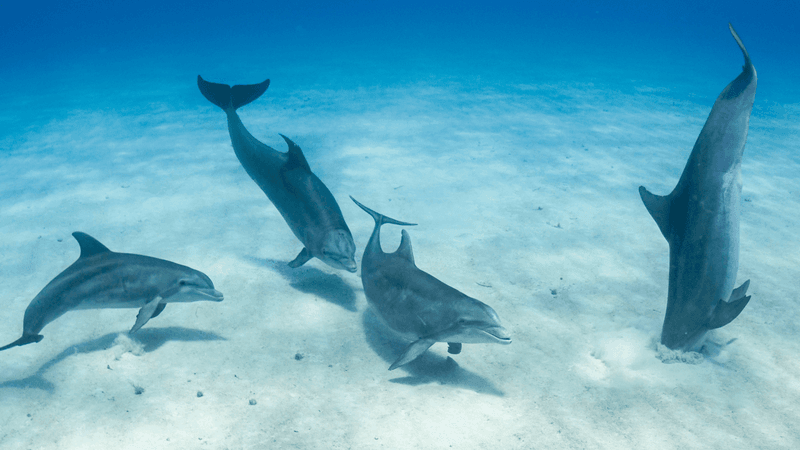
Bottlenose dolphins are celebrated for their intelligence and social structures, often seen hunting in coordinated packs. Their strategies include herding fish onto mudbanks or even using tools.
These dolphins inhabit warm seas worldwide, where their group tactics ensure a steady supply of food. Communication through clicks and whistles is vital for their coordination.
Bottlenose dolphins are a symbol of oceanic intelligence and cooperation, embodying the essence of teamwork in the wild.

